SEA FENNEL IN BLOOM
12th August 2021 was a hot and dry Thursday, a typical summer day, and I spent the whole afternoon photographing various insects on one particular kind of plant ...
... Crithmum maritimum ...
... commonly known as rock samphire, sea fennel or just samphire. I like the Sea fennel name the best, so I put it in the tittle.
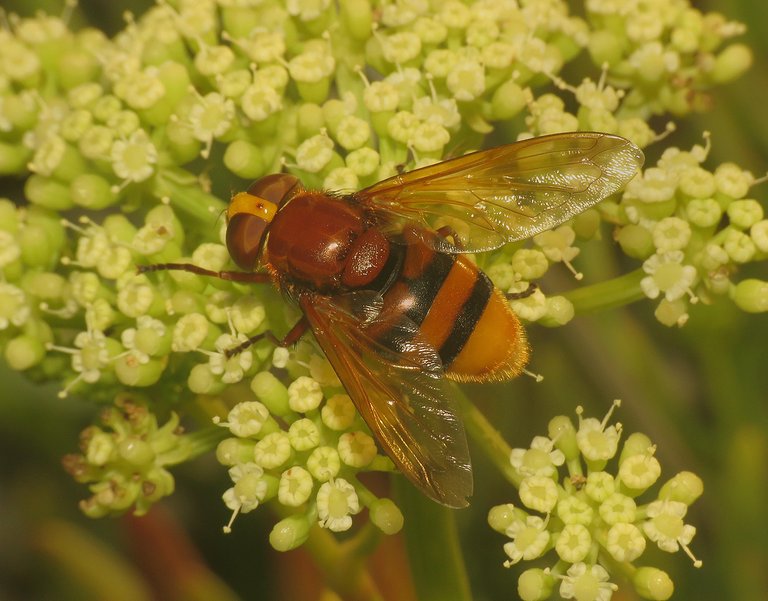
Wasps and flies were especially active around the flowers ...

... and quite often ...
... it was pretty hard to tell which is which from a distance. This hoverfly, the Volucella zonaria is mimicking the hornet. Although considerably smaller than the European hornet (Vespa crabro), it's pretty big for a fly. Definitively one of the biggest, most robust flies in this area.

Adults feed on nectar, and they visit a wide variety of flowers. Females lay their eggs in wasp and hornet nests, so the larvae of this interesting species grow on the same food as the offspring of wasps and hornets.
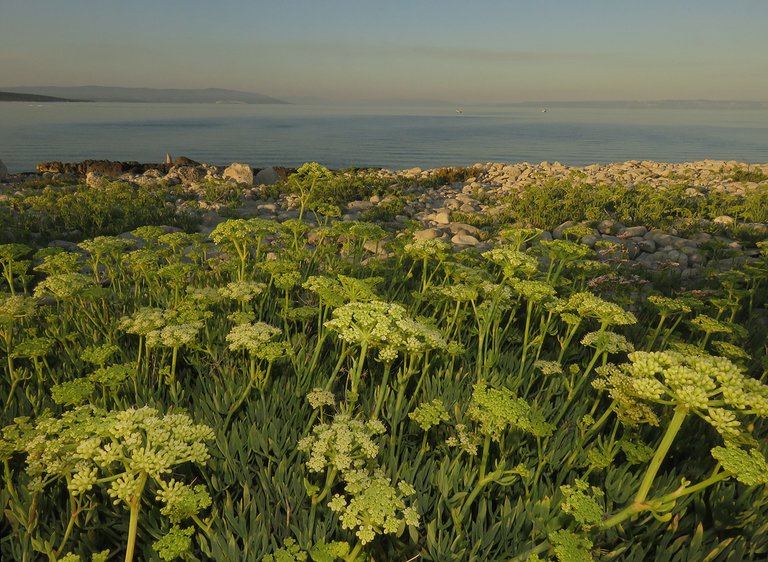
I saw a couple of hornets that day, but they were pretty fast, always buzzing around me without lending on the plants, so I wasn't able to catch them with my camera. It would be great to have a hornet here, for comparison, but it wasn't meant to be.
I can't show you a hornet here, but I have another species that looks a lot like one. Its shape is pretty different, but the colors and markings are pretty similar.

This is a potter wasp.
Delta unguiculatum is the name of the species. Adults feed mainly on various caterpillars, but they supplement their diet with nectar. Caterpillars are also used as food supply for the wasp's larvae. Females build pot - like shelters using the sand and their saliva.
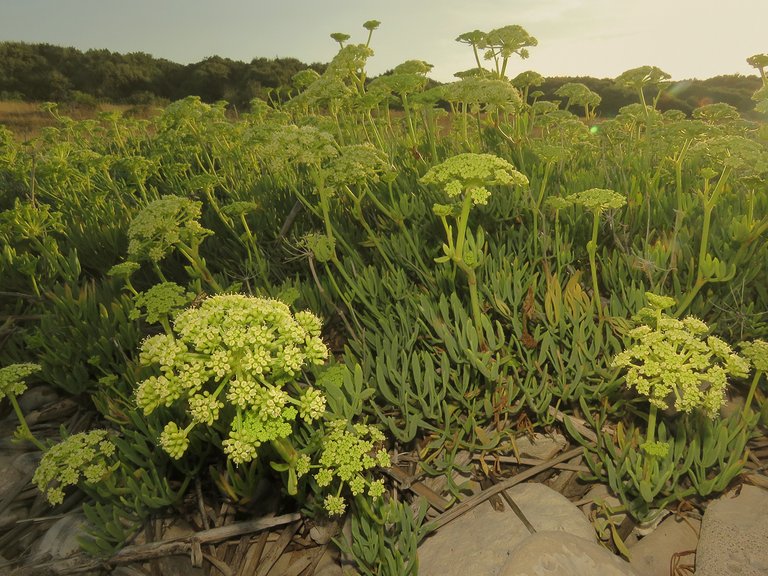
After waiting on the same spot about ten minutes or so ...

... another fly landed in front of my camera.
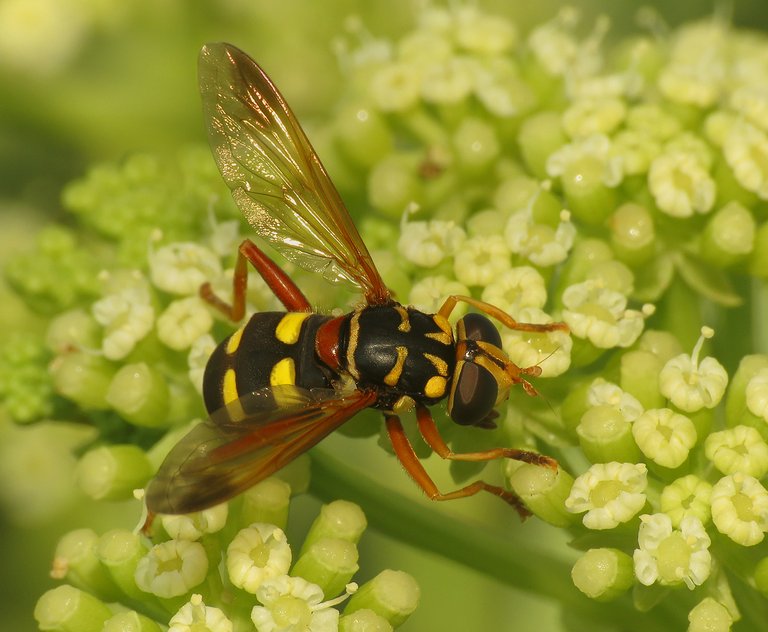
The Milesia semiluctifera hoverfly mimics the “classic” wasp look with yellow stripes on black background.
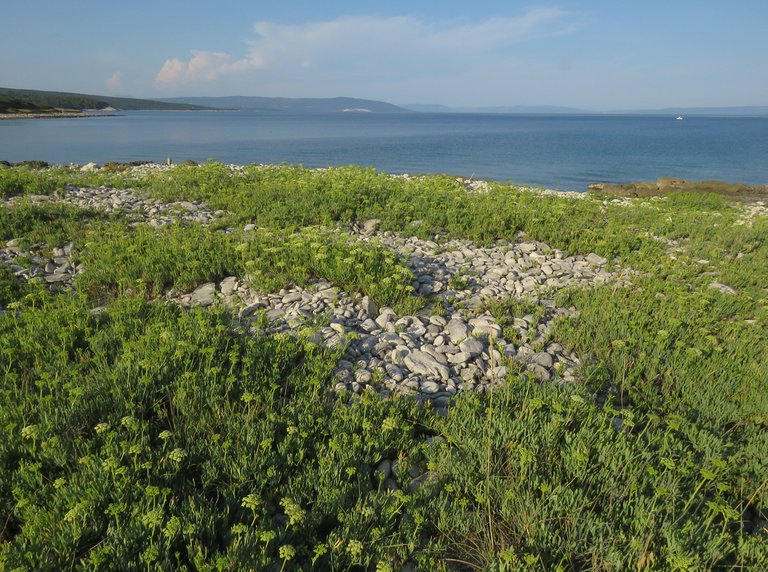
Some time later, just a couple of meters further ...
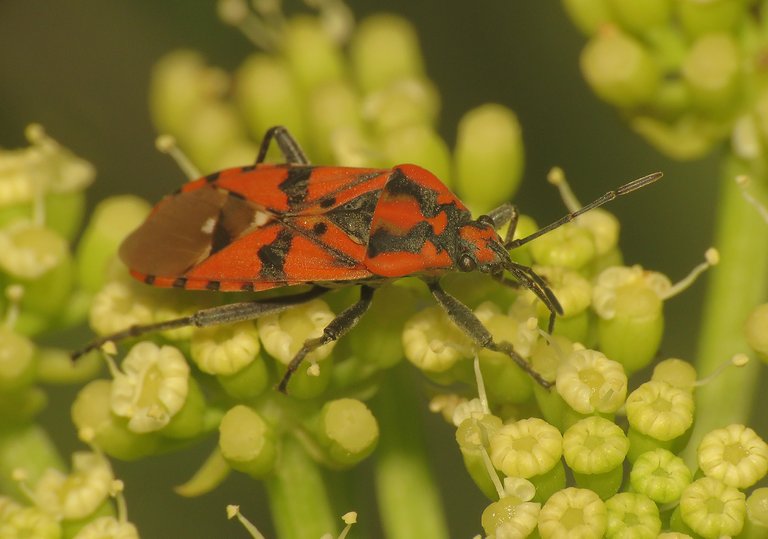
... I found this colorful bug, Lygaeus equestris, from the Lygaeidae (Ground bugs) family.
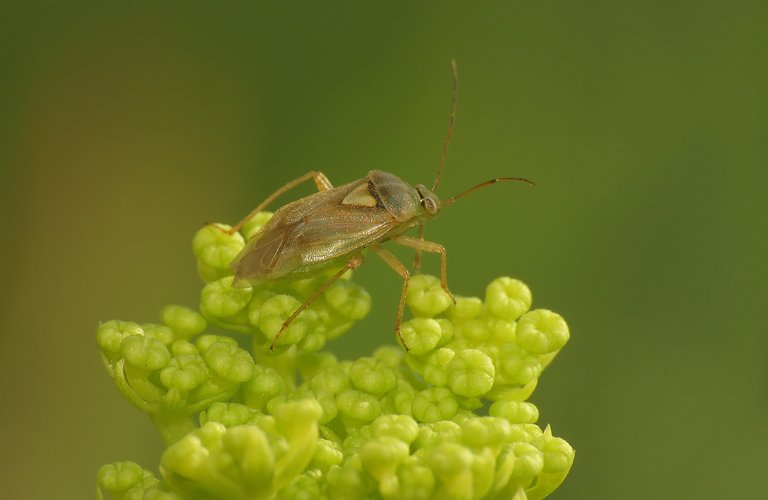
This small, inconspicuous bug from the Miridae family ...

... was resting on the nearby flowers.
Lygus rugulipennis is the name of the species. These bugs are pretty small ...
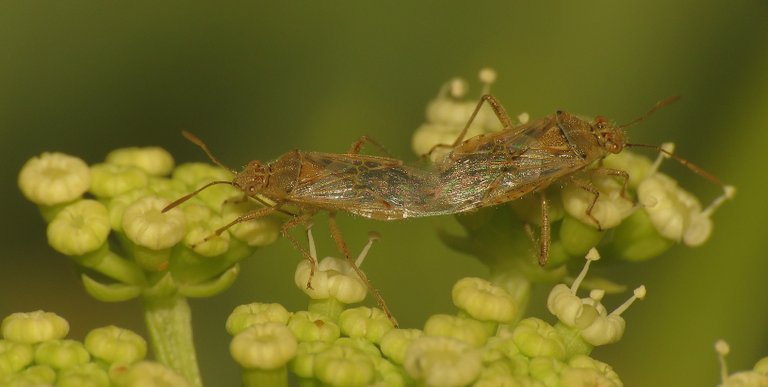
... but the Nysius senecionis on this photograph are even smaller. This is a species from the Lygaeidae family.
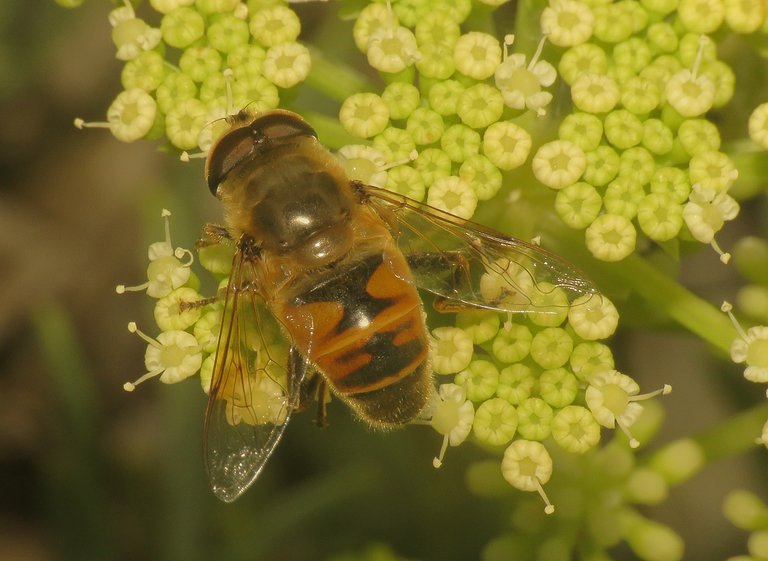
I encountered another fly after these bugs. This one wasn't mimicking a wasp, for a change. It was mimicking a bee. Eristalis arbustorum is one of quite a few similar bee - mimicking flies from the Eristalis genus of the Syrphidae family, present in this area.
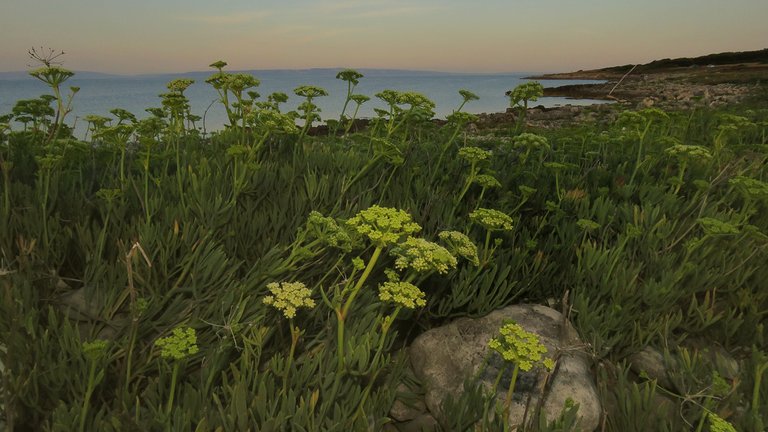
I will show you some more insects soon, but now ...
... it's time to write a few words about the plant at the center of this post.
Crithmum maritimum is the only species of the monospecific genus Crithmum from the Apiaceae family. Commonly known as celery, carrot, or parsley family. It grows on southern and western coasts of Britain and Ireland, on Mediterranean and western coasts of Europe and in the Canary Islands, North Africa and on the coast of the Black Sea.
This is an edible, very tasty and aromatic plant. It's rich in C vitamin and some other cool nutrients, so it was used by sailors to prevent scurvy. I'm always chewing the juicy succulent leaves while photographing around the tiny flowers.
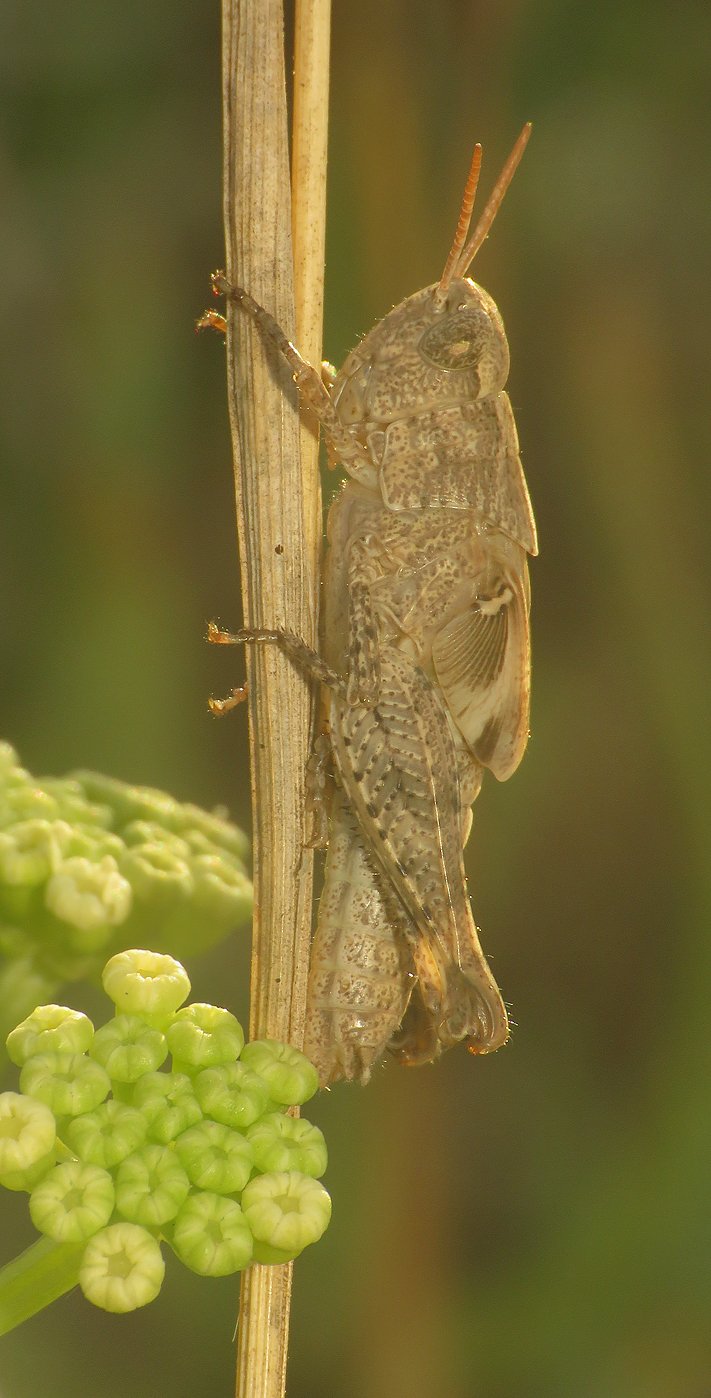
This grasshopper nymph, I don't know the exact species, was just resting on the dry grass at the edge of the green Sea fennel fields ...
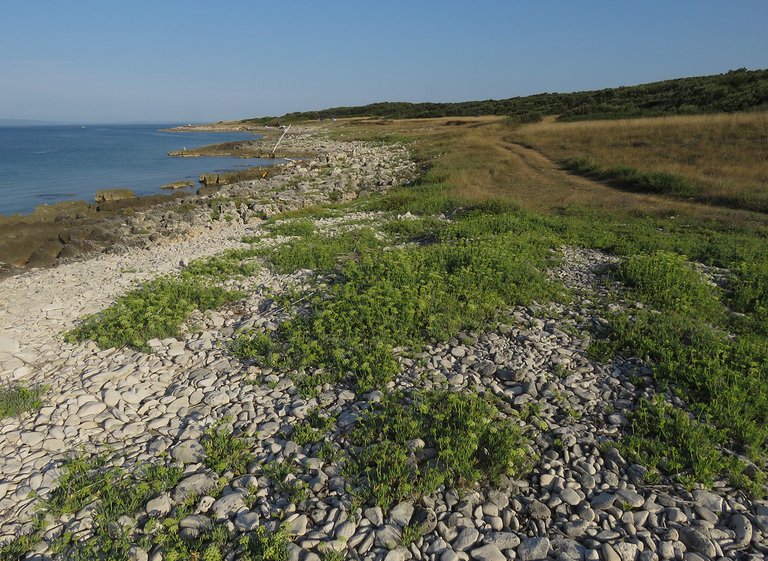
... that have partially covered the white pebbles along the shore.
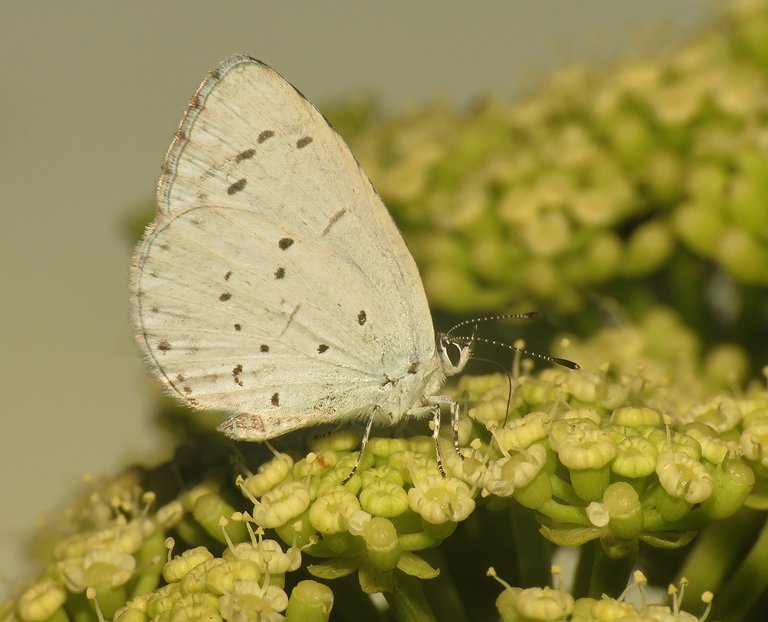
I saw some butterflies here as well.
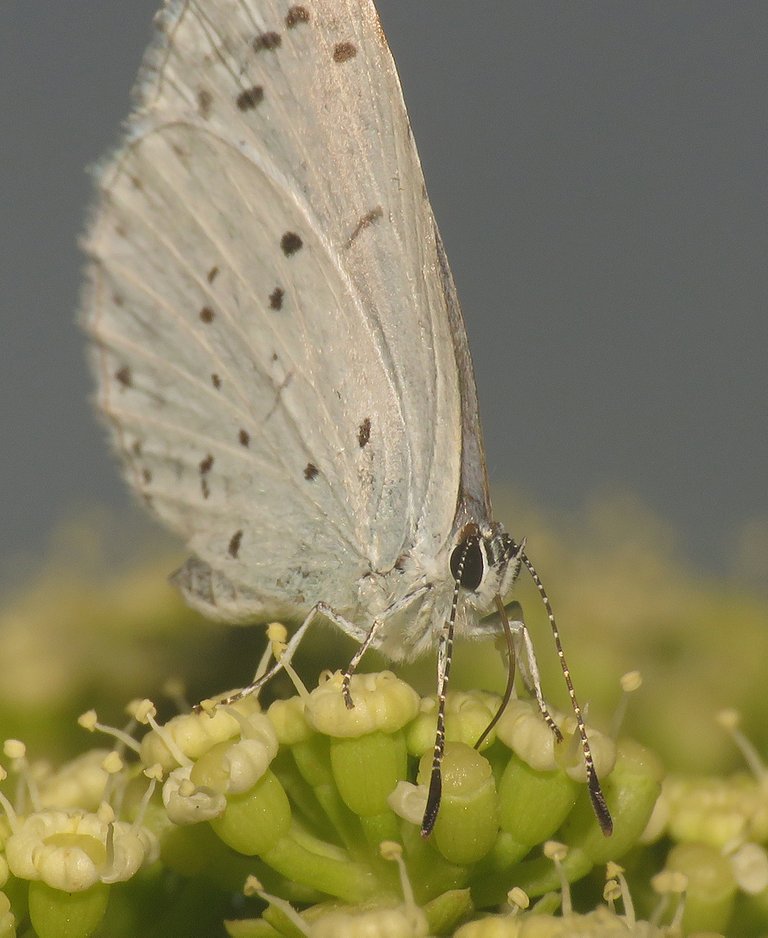
They were all pretty small.
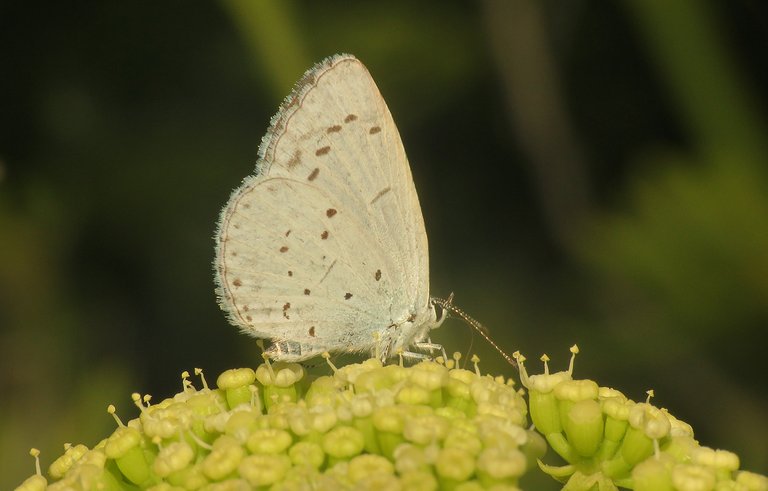
This is the Celastrina argiolus ...
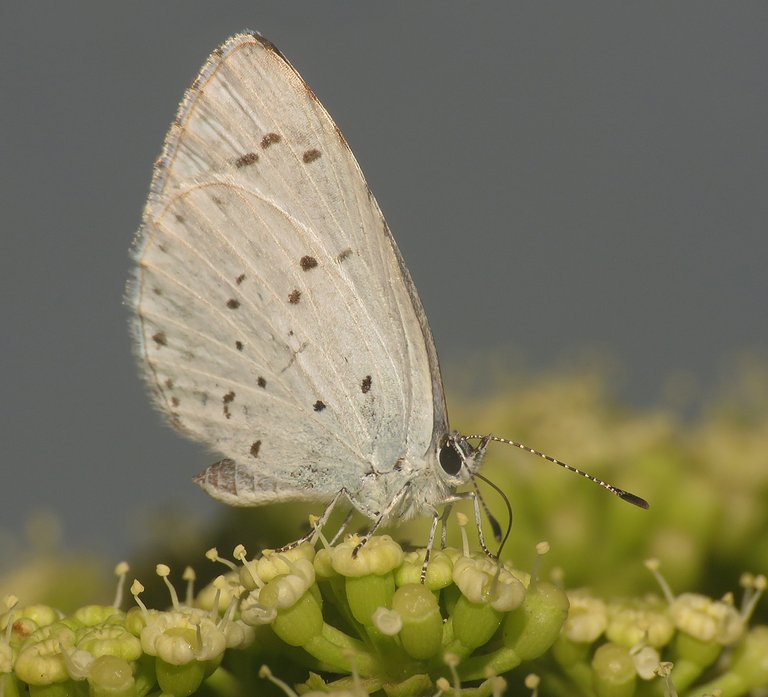
... commonly known as the Holly blue ...
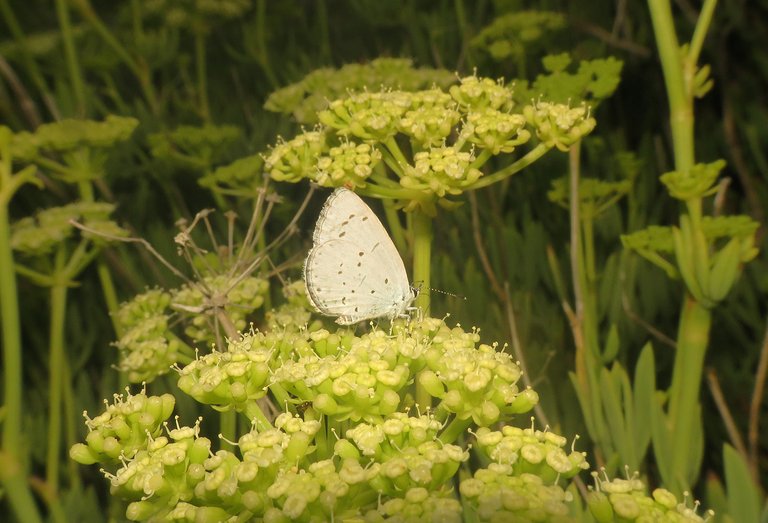
... one of the small blue species from the Lycaenidae family, very abundant in this area.
On the following photographs ...
... you can take a look at another lovely Lycaenidae species that came to feed on the tiny flowers ...
... the Neozephyrus quercus, commonly known as the Purple Hairstreak.
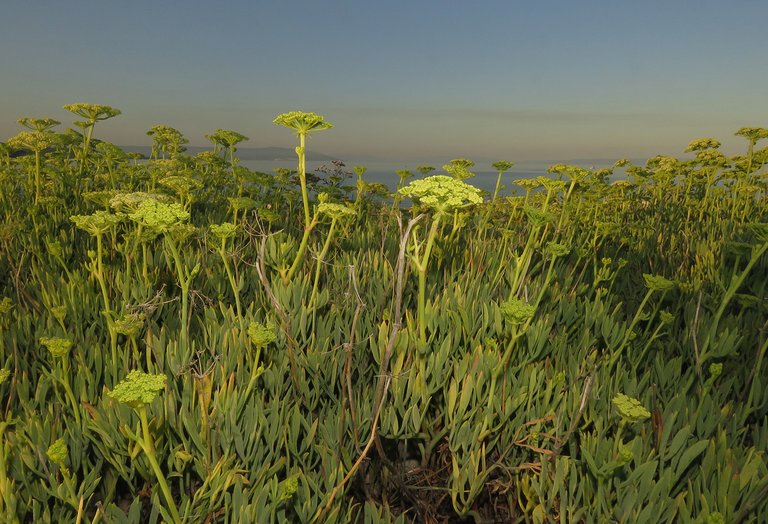
Very soon I came across another beautiful insect ...
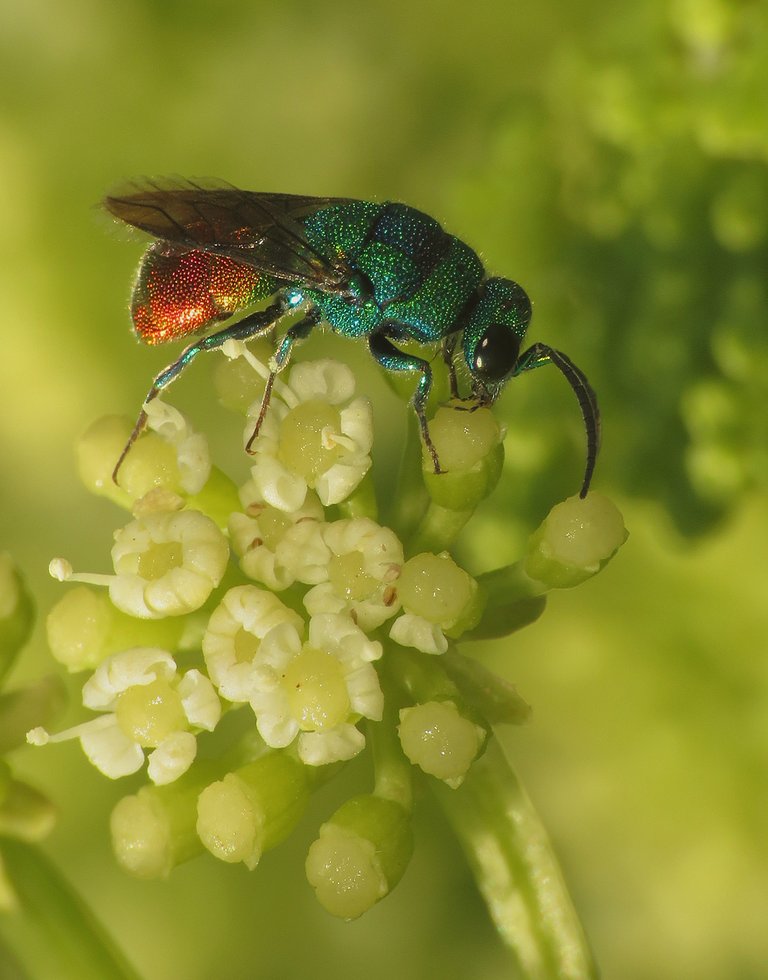
... this glittering little wasp that I see relatively often, but rarely have the opportunity to approach and photograph, before it disappears from sight ...
... the Chrysis inaequalis, a cuckoo wasp from the Chrysididae family. These wasps are parasites of bees and various social wasps. The Chrysididae females lay eggs in their nests. That's the reason for the "cuckoo" in the common name. The adults feed on sweet foods such as nectar and honeydew.

At one point, I noticed this small, elongated bug ...
... the Miridius quadrivirgatus, from the Miridae family.
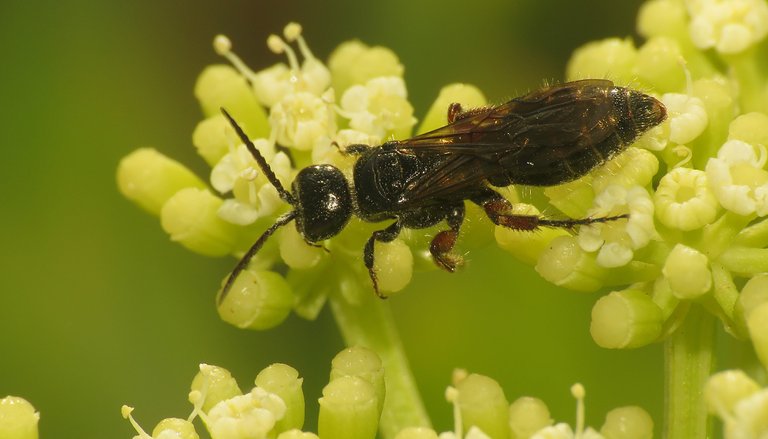
Here you can see another wasp ...
... Tiphia femorata. Commonly known as the beetle-killing wasp.
These wasps parasitize by stinging the larvae of various Scarabaeidae beetles, but if possible, they prefer the Amphimallon solstitiale, a very common and abundant species in this seaside area. The females can smell beetle larvae in the soil, so they dig their way to them and drop an egg in their victims. Once hatched, the Tiphia femorata larvae come out of the big, meaty host larva and feed externally on the grubs.
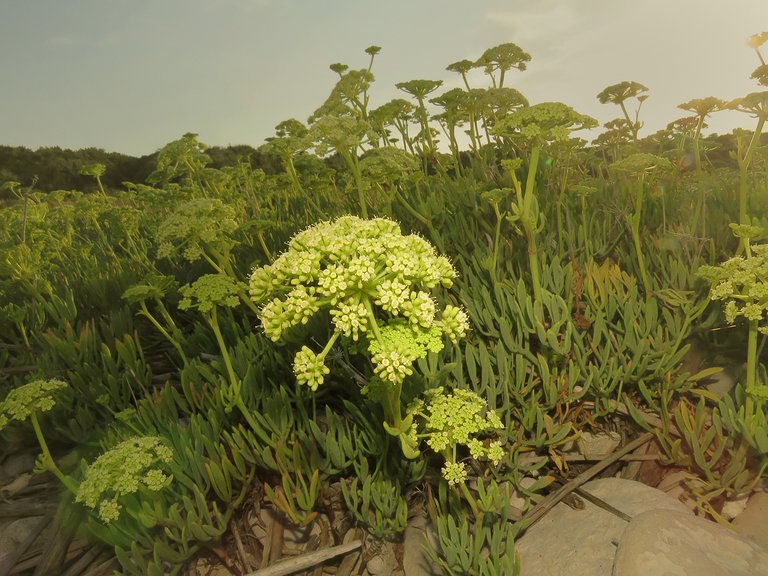
I saw many amazing things in just one day ...
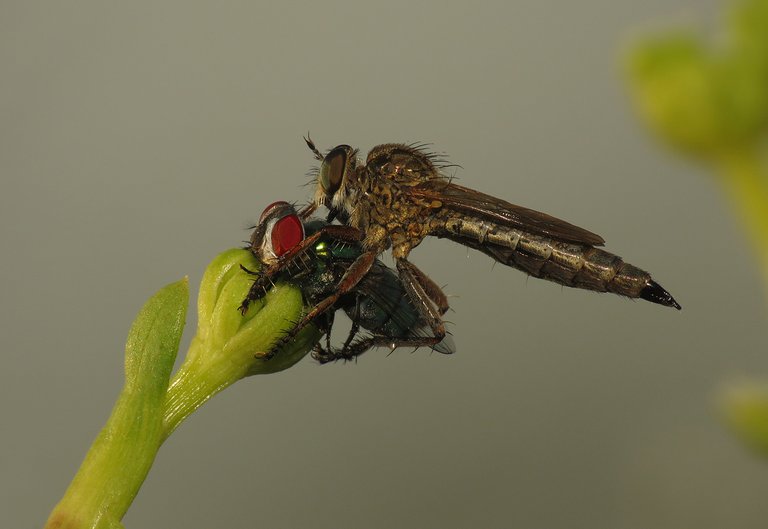
... thanks to my macro lens.
On this photograph, the robber fly, Asilidae - I don't know the exact species, has caught a Common green bottle fly (Lucilia sericata ). After this shot, the predatory fly flew away ...
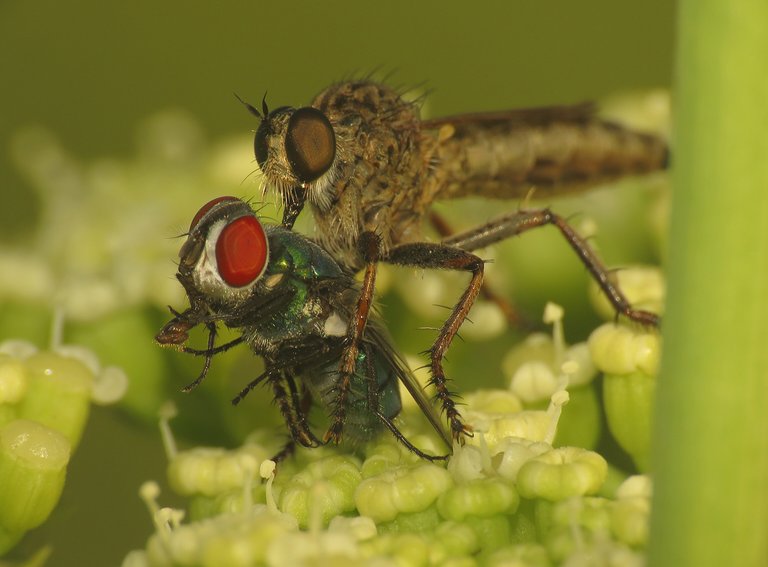
... but soon it landed again, not far from me ...
... so I was able to take a few more photographs.
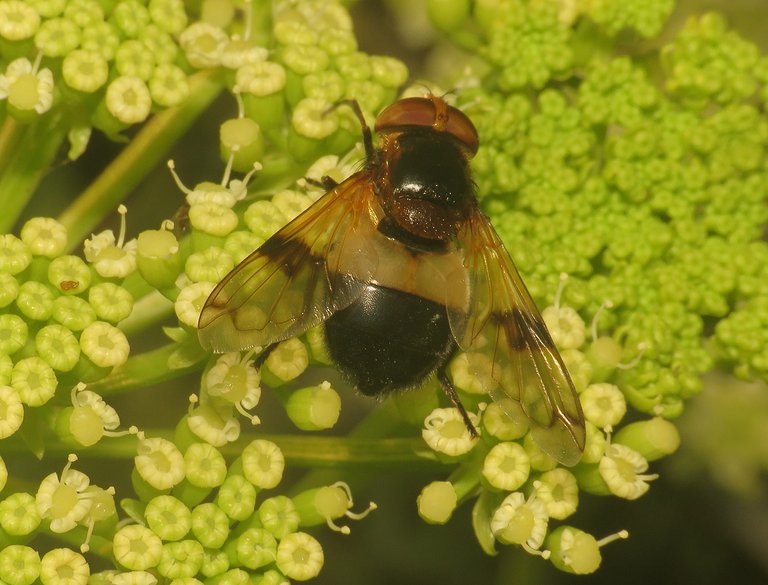
This is the Volucella pellucens, another species from the large and varied Syrphidae family. Adults live on nectar and pollen and visit a large range of flowers. When it's time to reproduce, after the mating, the females enter the paper nests of the common wasps (Vespula vulgaris), or the German wasps (Vespula germanica), and lay their eggs there.
The larvae then feed on the host's offspring.
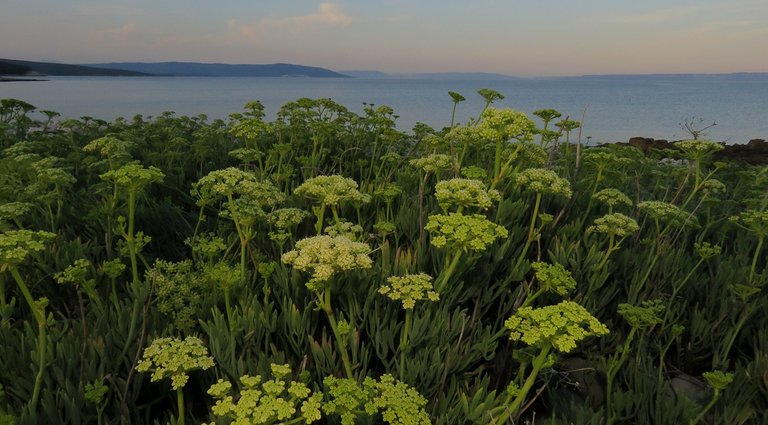
While observing what's going on around these nectar rich flowers ...
... I found also this small yellow inchworm.
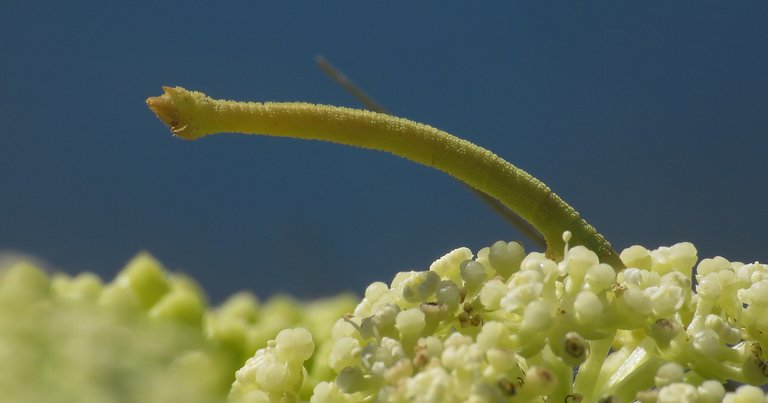
This is some well camouflaged caterpillar. A moth caterpillar, more precisely. Probably from the Geometridae family. Here my precision definitely ends. I can't tell you the exact species.
This small beetle from the Mordellidae family, the Variimorda villosa, was enjoying the nectar and pollen.
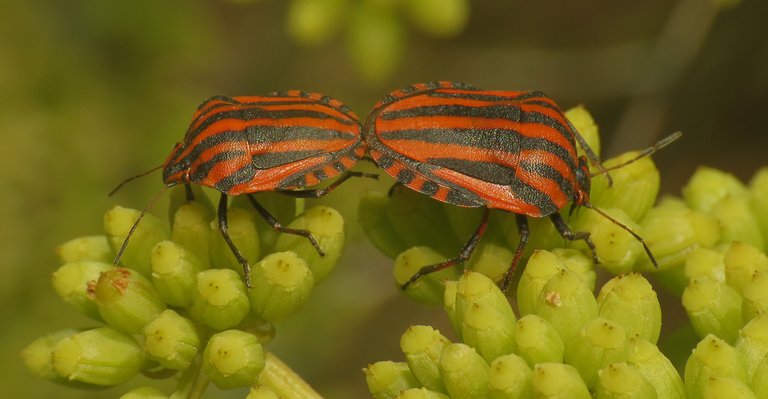
The colorful Graphosoma lineatum shield bugs were mating among the flowers. And now ...
... before the end that is almost here, I'll show you one more wasp.
This is the Isodontia mexicana, an invasive North American species that is now widespread across the Mediterranean Europe as well.
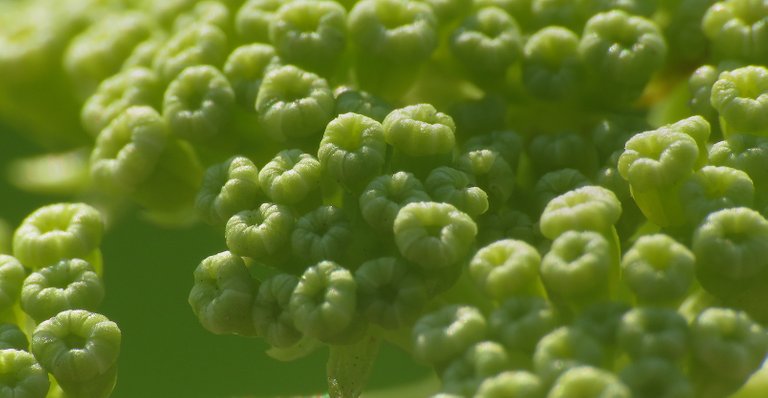
And that's all for today. As always in these posts on HIVE, the photographs are my work - THE END.


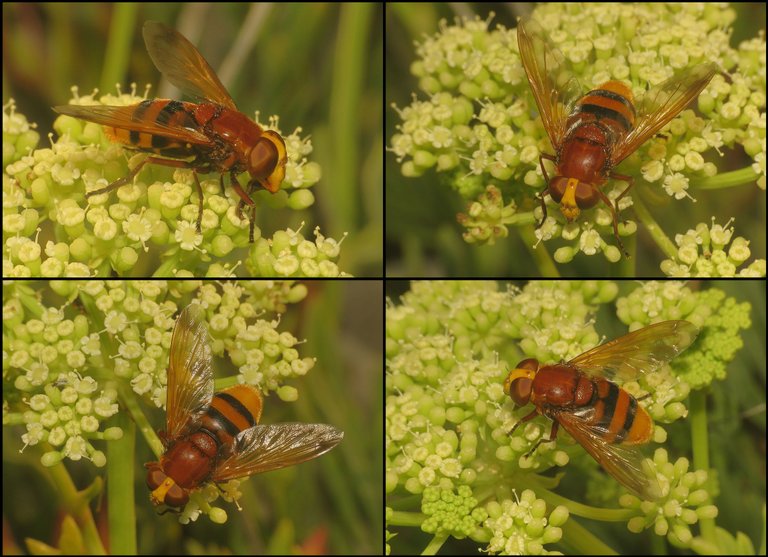
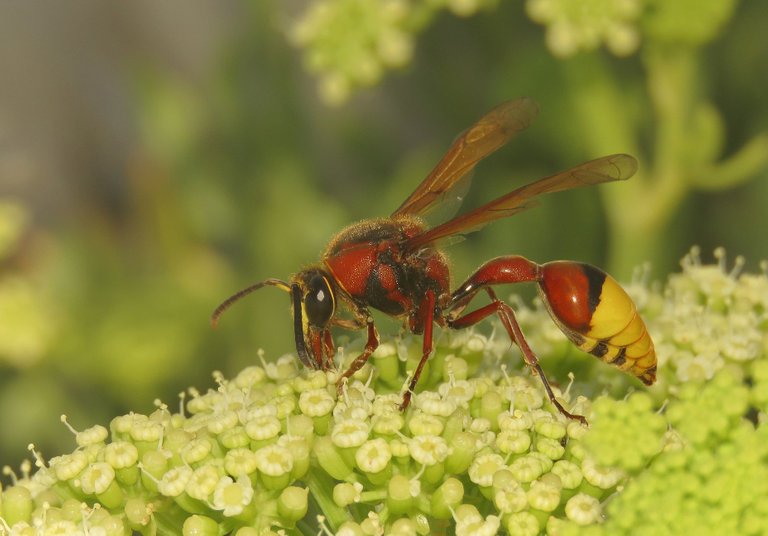
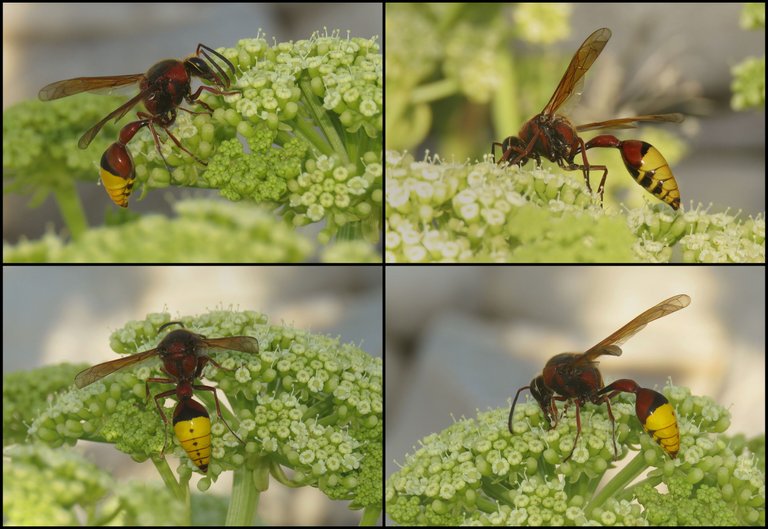

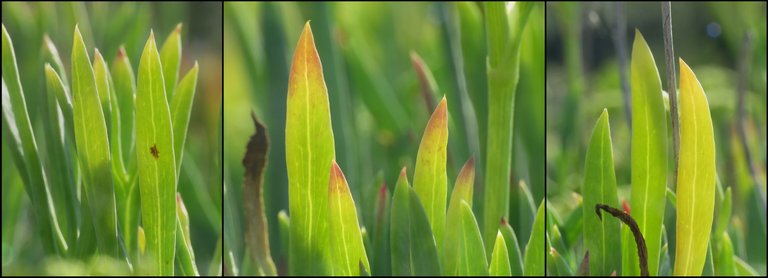


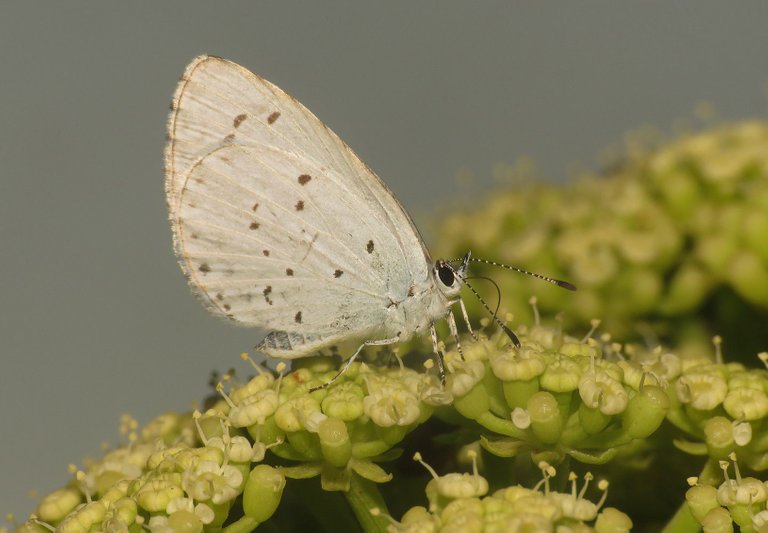

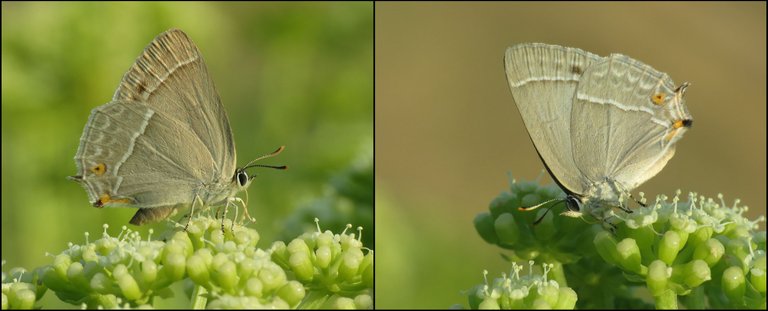
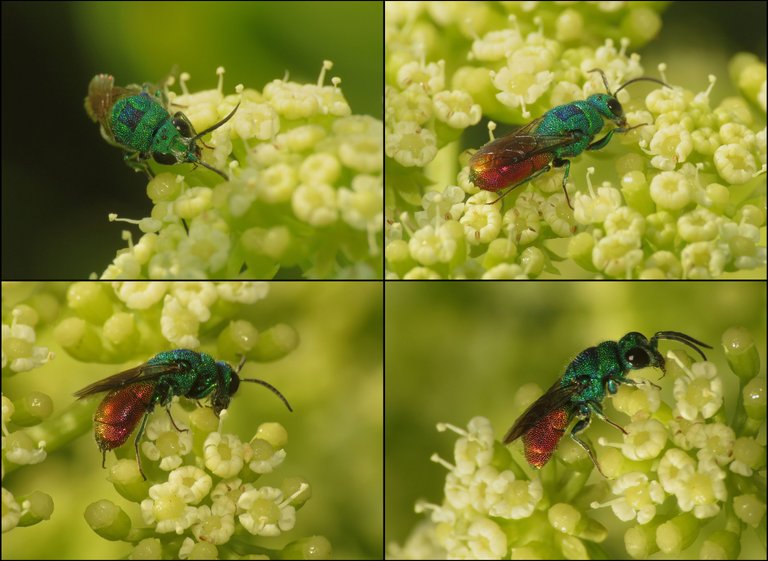

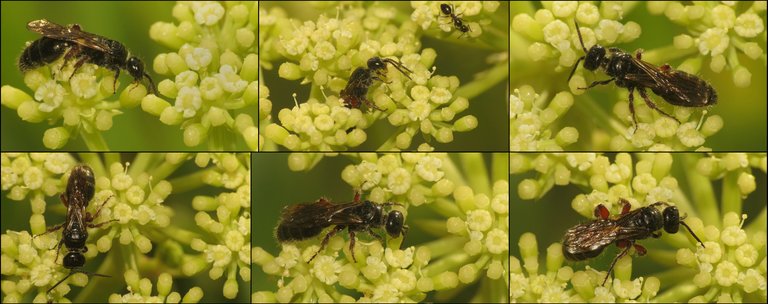
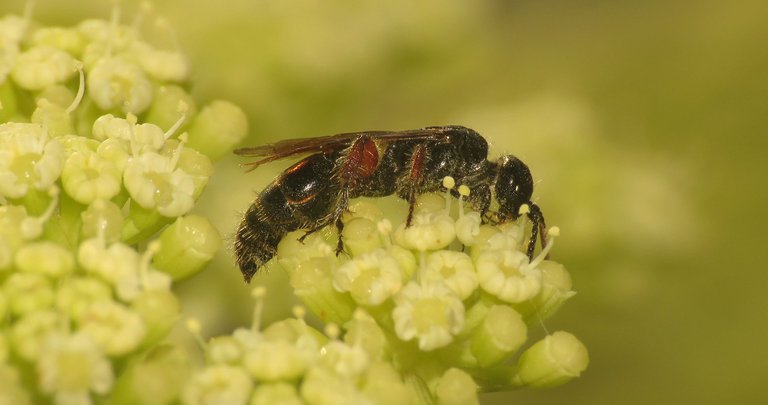
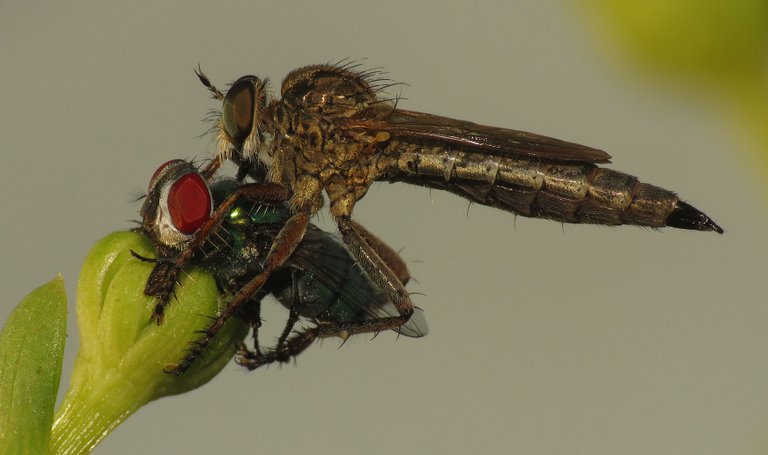
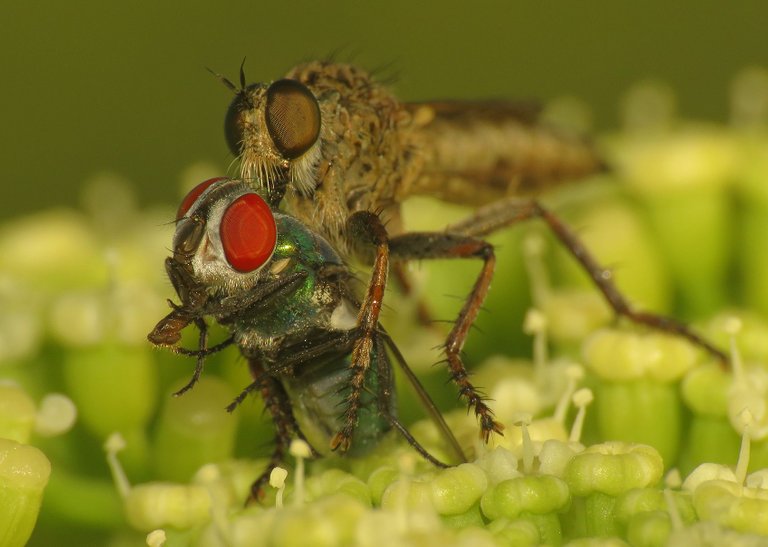
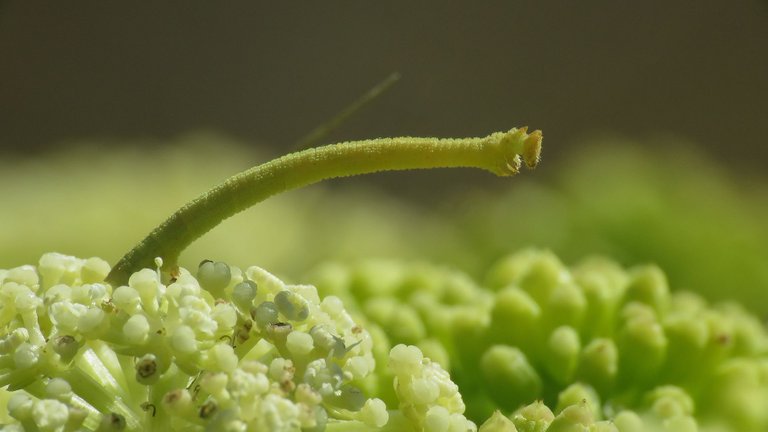


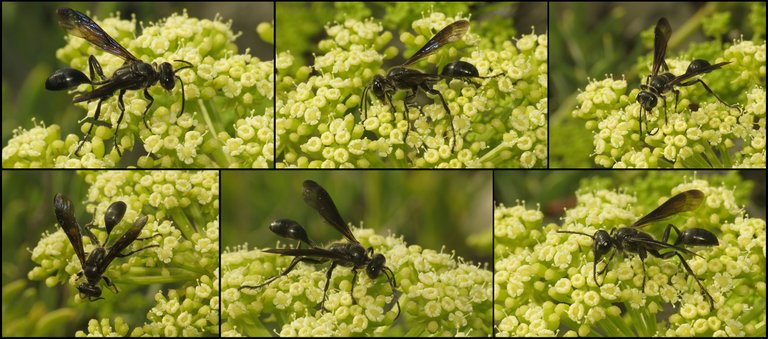
Wow awesome post and incredible detail thank you very much for sharing and putting all this work into your post.
I am definitely see lots more amazing work coming from your account!
Thank you :) Glad you like these posts about flora & fauna.
Absolutely nature has some amazing sites if you are willing to look and understand at what you're saying.
Thank you very much and I hope you have an amazing day.
Thank you for the National Geographic quality visual nature journey! Remarkable photographs @borjan
Thank you :)
Thank YOU! @borjan💓
How are you dear friend @borjan good afternoon
Here enjoying your collection of images, you live in a beautiful place, you take them in this very beautiful opportunity, I love how many species of insects you can find in one place
I appreciate very much that you let us know these beautiful photographs
I take this opportunity to wish you a splendid afternoon
I always find something new in your post and see a lot of interesting things. You make your post interesting through a lot of photography. All the insect photography has been awesome. You are beautifully photographing everything including butterflies and wasps.
Manual selection by @cliffagreen.
Good job brother! I like it.
What a gorgeous journey among some amazing plants!
Awesome post! Reblogged and upvoted due to its awesomness and quality.
!PIZZA
!LUV
Welcome to 🍕the Cool Pool Pizza Party!🍕
@borjan! I sent you a slice of $PIZZA on behalf of @coolpoolparty.
Learn more about $PIZZA Token at hive.pizza (3/10)
<><
@borjan, you've been given LUV from @coolpoolparty.
Check the LUV in your H-E wallet. (3/3)
Thank you :)
You're welcome!!
!BEER
Cheers :)
View or trade
BEER.Hey @borjan, here is a little bit of
BEERfrom @coolpoolparty for you. Enjoy it!Did you know that you can use BEER at dCity game to **buy dCity NFT cards** to rule the world.
what a beautiful view and some really cool little animal species...
A cute scary wasp glistening green-red like some flower and a semaphore hehehe ;))
The satiny eyes on this Volucella zonaria, the very unusual shape of the Delta unguiculatum, the iridescence of the Chrysis inaequalis, and the stripes on the Graphosoma lineatum shield bugs. Very cool!